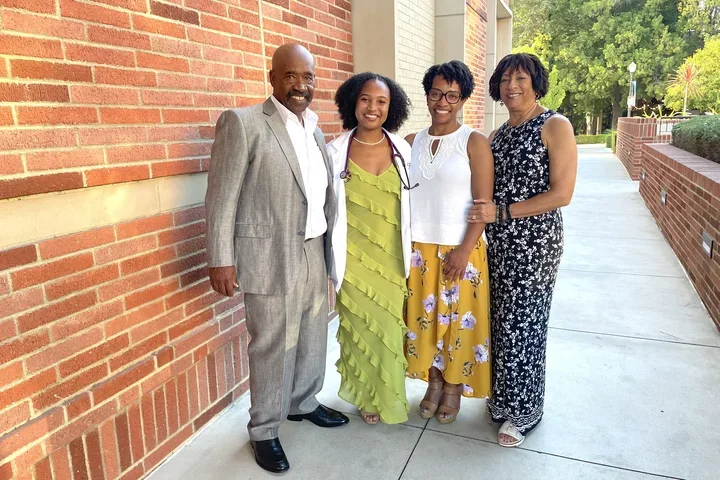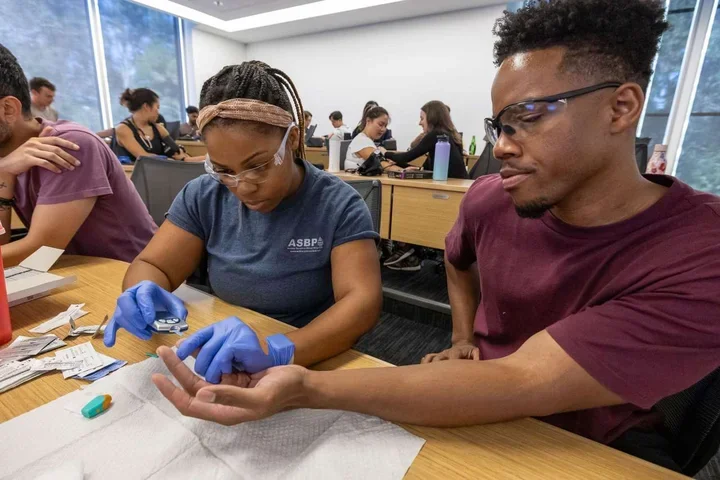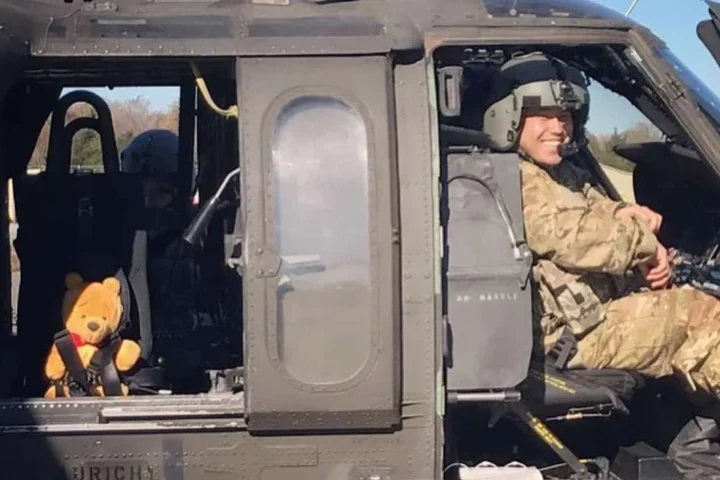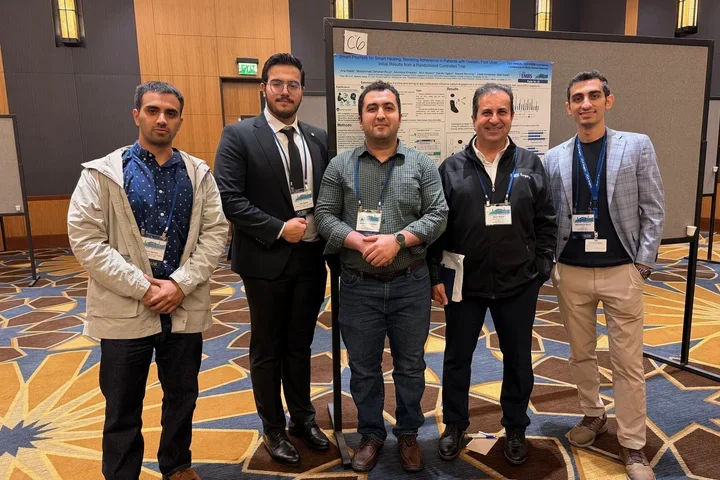The Head and Neck’s Intricate Anatomy Inspired a Career Dream
Student Spotlight
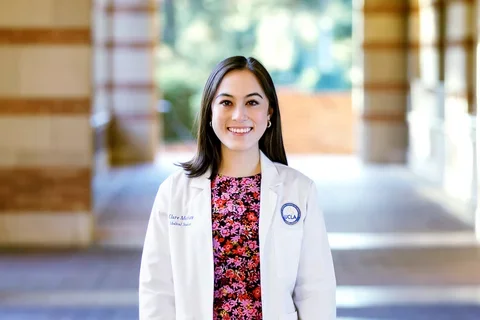
Meet Clare Moffatt
Long before she picked up her first anatomy textbook, Clare Moffatt learned the importance of patient care from her mother, who practiced family medicine.
“Seeing her treat patients in such a caring way inspired me,” Clare says.
Clare connected with her own patients as soon as possible. She led an HIV/AIDS outreach project in rural Ghana and worked at a free clinic for vulnerable patients in the Bay Area.
She started at the clinic during her freshman year at Stanford University and spent the next four years caring for patients from all backgrounds, who had no other healthcare access. By senior year, she’d become the clinic’s manager. She’d also decided to spend her career providing the kind of life-saving care her clinic offered.
Fun fact: Clare loves film photography and developing her own 35 mm photos. The hobby gives her a chance to explore her more creative side.
From Tech Startup to Medicine
Attending Stanford immersed Clare in a world of technological innovation and possibility. Before pursuing medical school, she spent two years working at a health tech startup.
While she envisioned herself becoming a doctor in the future, she also saw value in learning different perspectives and skills along the way.
“That was a really exciting time for me, trying something different from medicine and working in a fast-paced tech environment.”
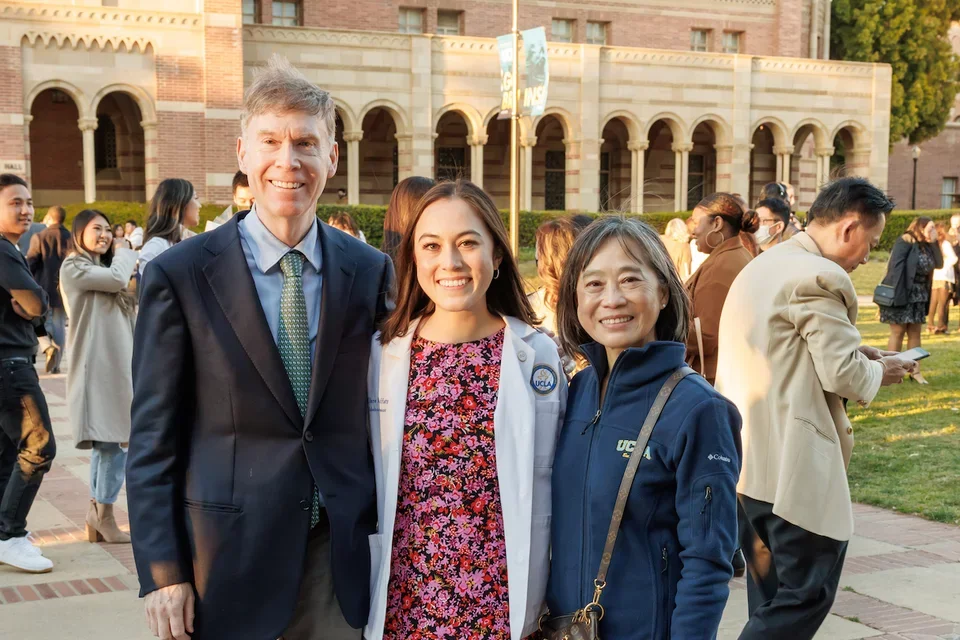
When Clare matriculated at the David Geffen School of Medicine at UCLA (DGSOM) in 2020, she found her tech skills surprisingly beneficial in her medical training. Her tech experience working on a team at a fast pace, for example, helped her navigate clinical environments, where people also work in teams and under pressure.
Clare says the stress of working in tech doesn’t match the stress of starting medical school at the height of the COVID-19 pandemic. However, she sees some silver linings when she reflects on her early med school days.
The pandemic compounded the natural strains of starting medical school, but it also underscored medicine’s critical importance in society. It compelled the 2020 incoming class to bond in unprecedented ways.
“In some ways, it brought our class closer together as a community,” Clare says, remembering how she and her classmates gathered in classrooms and labs wearing masks and face shields.
“We were all sharing the same unique experience.”

Love for the Community and the Operating Room
Today, community remains Clare’s favorite thing about attending medical school at DGSOM. As a student well-being representative, she helps her classmates find balance and make time for fun in their busy schedules.
She loves thinking through medical problems with faculty members and classmates and feeling supported enough to challenge herself, ask bold questions, and make surprising discoveries—some related to her own medical interests.
During her third-year rotations, for example, she discovered a passion for surgery.
“I just fell in love with being in the operating room,” she says. “I love the excitement, the challenges, and the attention to detail.”
One particularly influential mentor invested extra time in walking Clare through different surgical techniques and guiding her through procedures. She gained invaluable hands-on experience and a rewarding sense of autonomy.
“I really started to feel like I could call the operating room ‘home’ for my career.”
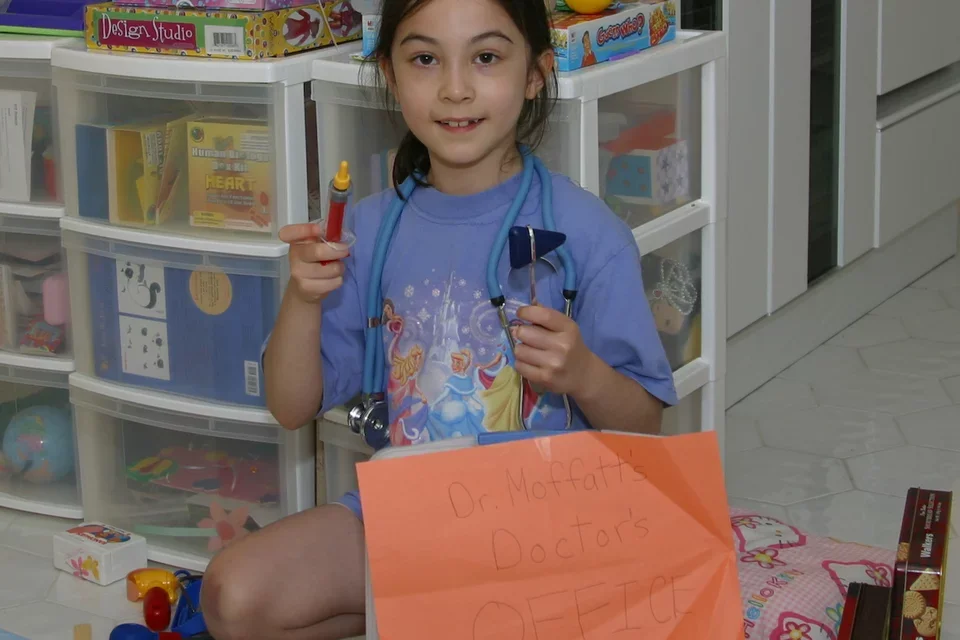
A Beautiful, Delicate Anatomy
Clare had her sights set on general surgery before assisting in a thyroid surgery altered her plans.
“I realized I loved the anatomy of the neck,” she recalls. “It includes so many important nerves and vessels.”
Clare found the head and neck’s combination of complexity and delicacy utterly fascinating. Knowing every individual patient’s anatomy would be unique made her feel even more excited.
“It’s like a puzzle to solve before each surgery,” she explains. “You have to look at each individual’s anatomy, tracing things back to figure out where you need to go during an operation.”
Clare switched her specialty from general surgery to otolaryngology, sometimes referred to as head and neck surgery or ear, nose, and throat (ENT) surgery. With support from her mentors, she dedicated herself to learning as much about her new field as possible.
UCLA selected her for the R25 Head and Neck Surgery Medical Student Mentored Research Pathway, which enables her to complete a dedicated research year with the UCLA Laryngeal Physiology Laboratory.
Guided by renowned laryngologist Dinesh K. Chhetri, MD, Clare is engaging in enriching projects and studying a range of topics, including vocal cord paresis and paralysis, radiation fibrosis of the epiglottis, and dysphagia in myasthenia gravis.
With each day and each project, Clare gets closer to fulfilling her dream of becoming a head and neck surgeon.
